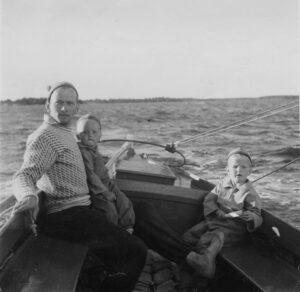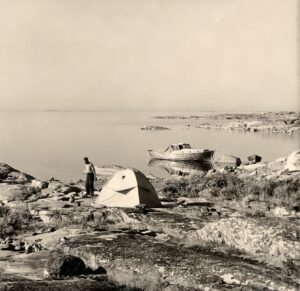The new exhibition “Marine Town Rauma” at the Rauma Maritime Museum indulges in maritime nostalgia

The themed exhibition offers a diverse collection of examples that illustrate the perception of maritime life in Rauma – and its uniqueness – which has been constructed and maintained over time. Highlights include examples such as “lapskoussi” (lobscouse casserole), local tattoos, memorials, and maritime songs performed by the singing group Jungmannit.
In addition to familiar topics, visitors to the exhibition can explore fresh perspectives on maritime Rauma. On display are love letters to the Raumanmeri (“Rauma Sea”), maps of favorite spots along the Raumanmeri or its shores by young people from Rauma, and insights into Rauma as a maritime city from students at the Rauma Theatre School, Freinet School, and Sataedu Finnish language students. The themed exhibition also celebrates 20 years of operation for the Rauma Maritime Museum. The exhibition is open from February 10, 2024, to December 20, 2025.
Rauma residents have been meticulous in presenting maritime history over the decades
Preserving the cultural heritage of sailing and the sailors of that time has been particularly close to the hearts of Rauma residents. The golden age of merchant shipping in Rauma is considered to be the 1890s when the city’s merchant fleet was the largest in Finland for a few years.
Efforts have been made to document this important theme since the golden age through various museum projects. Although Rauma’s own maritime school museum was not realized and the frigate Osmo did not become a museum ship, the schooner Uljas became a symbol of the end of the sailing ship era by being ceremonially burned and sunk in the Raumanmeri in 1950.
The exhibition also showcases one of Satakunta’s first public art projects, involving the sculptor Emil Cedercreutz’s project to bring a statue representing the character Tasala Vilkk, created by the author Hj. Nortamo, to Rauma. The first draft of the statue was displayed in Rauma’s market square in November 1913, but locals did not approve of it, citing issues like incorrect boots and a serious expression. The Turku-based newspaper Uusi Aura commented at the time, “The statue was supposed to depict a sailor, but the people of Rauma, in everything related to sea conditions and sailors, are quite self-aware and demanding.” The Tasala Vilkk and Hakkri Iiro sculpture was eventually brought to Rauma by the artist Kauko Räikke in 1960.
Camping on the islands is not as popular as it used to be
Boating became more common in the 1960s when Saturdays became a day off. If in past decades one had to compete for the best camping spots in the Rauma archipelago, today’s Rauma Midsummer celebrations rarely involve camping on nearby islands.
– If cultural heritage is not meaningful to modern people and is not actively used, it ceases to be cultural heritage and gradually fades from memory. To pass on traditions, knowledge, and skills to future generations, we need active individuals and communities who recognize it as cultural heritage and want to maintain it, for example, through collaboration with museums, says museum director Anna Meronen.


Photos and text: Rauma Maritime Museum